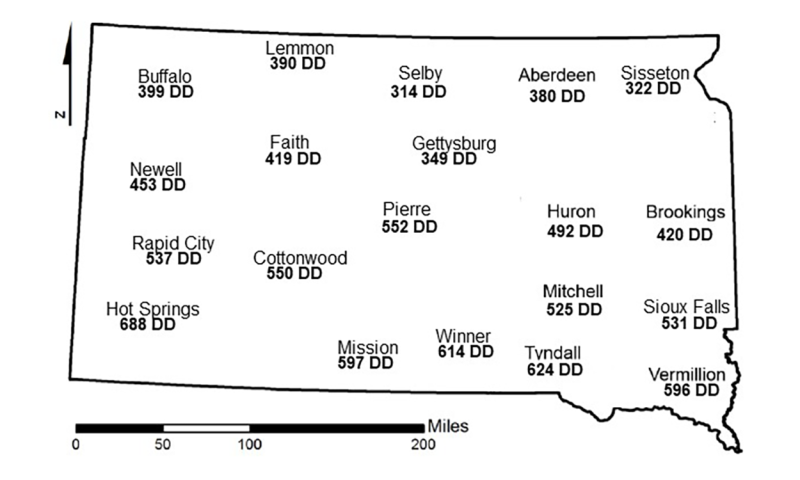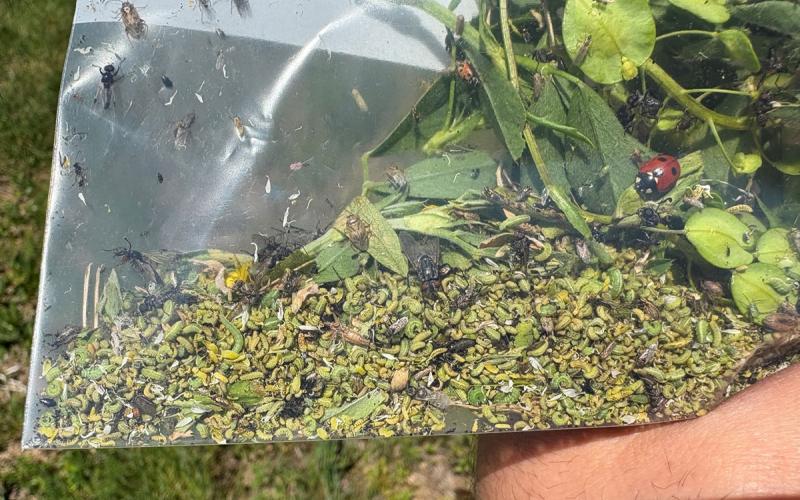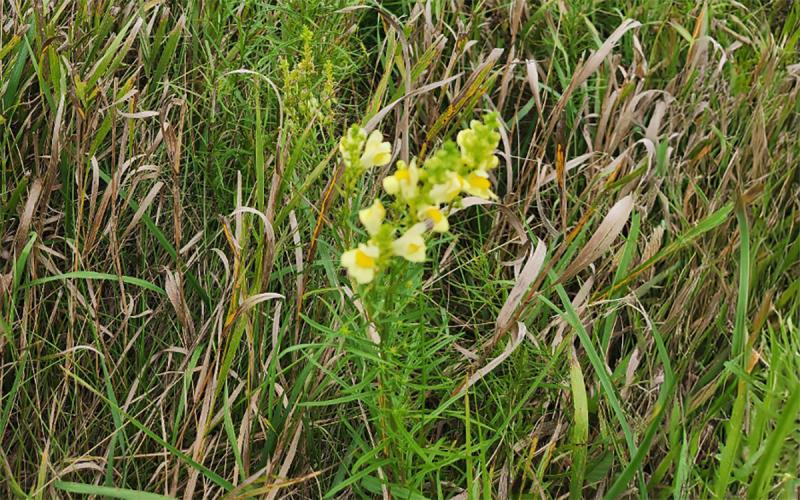Written with contributions by Shelby Pritchard, former SDSU Extension Pest Management Specialist.
Originally Submitted: May 26, 2022
Due to some pretty cold lows across the state, we didn’t accumulate a lot of degree days this week. However, while scouting alfalfa this week, we did observe some very small alfalfa weevil larvae near Brookings. Throughout the state, all alfalfa fields should be scouted weekly to ensure that large populations of alfalfa weevils do not cause excessive defoliation like what we observed in 2021. When we compare our current degree days to those during the same week in 2021, we are slightly ahead. The most-effective scouting methods will be using a sweep net or knocking alfalfa plants into a bucket to determine if alfalfa weevil larvae are present in the field. The forecast for next week will continue to be favorable for the development of alfalfa weevils.
Calculating Degree Days for Alfalfa Weevils
To monitor for alfalfa weevils, we can estimate activity based on degree day accumulation. The equation for degree days is:
(Maximum daily temperature + Minimum daily temperature) ÷ 2 - The Developmental Threshold
For the alfalfa weevil, the developmental threshold is 48 degrees Fahrenheit. This equation is used for days during which the maximum temperature exceeds 48 degrees Fahrenheit. In cases where the minimum temperature is lower than 48 degrees Fahrenheit, the actual temperature is substituted by the 48 degrees Fahrenheit developmental threshold since no development is occurring below it. Degree day accumulation begins on Jan. 1. First overwintering adult alfalfa weevil activity is generally observed around 200-degree days and larvae hatch is generally around 300-degree days (Table 1).
The alfalfa weevil has four larval instars, with the first being the smallest larvae and the fourth being the largest larvae. The later instar larvae will consume additional leaf tissue, which results in increased defoliation. As a result, management would ideally be done while larvae are still in the first and second instar growth stages.
|
Degree Days |
Alfalfa Weevil Activity (Overwintering as Adults) |
|---|---|
|
|
Limited to no activity of alfalfa weevils. |
|
|
Overwintering adult activity is observed in alfalfa fields (begin scouting fields). |
|
|
Spring laid eggs hatch. First instar larvae begin feeding. |
|
|
Second instar larvae feeding. |
|
|
Third instar larvae feeding. |
|
|
Fourth instar larvae feeding. (Period when greatest damage will occur) |
|
|
Pupation. |
|
|
Adult emergence (will overwinter). |
Current Estimate on Alfalfa Weevil Activity in South Dakota

Based on current degree day accumulations, alfalfa weevil larvae are likely active throughout South Dakota (Figure 1). This was confirmed for Brookings County, and weevil larvae are likely present in most fields. The larvae are still in their early instars.


